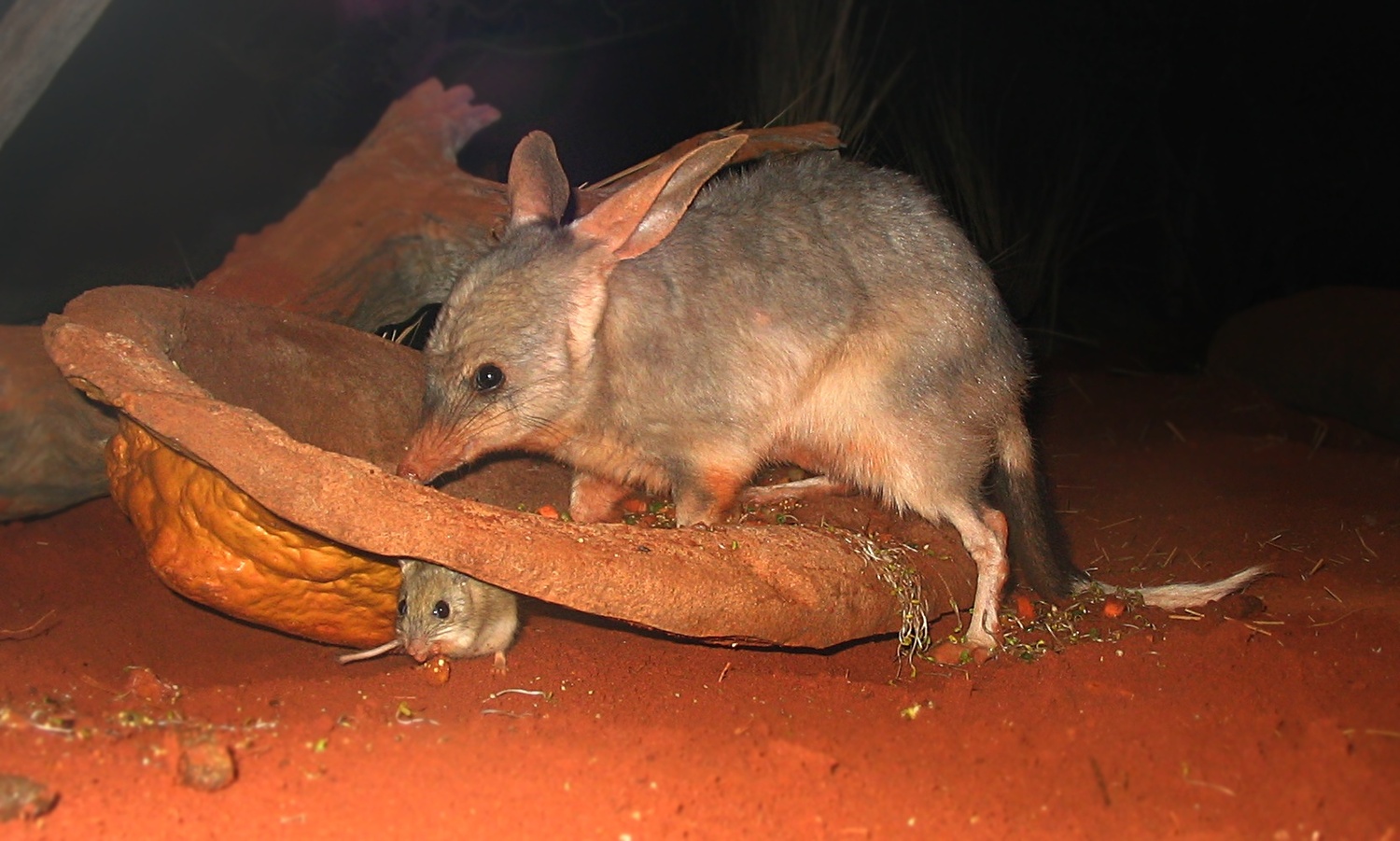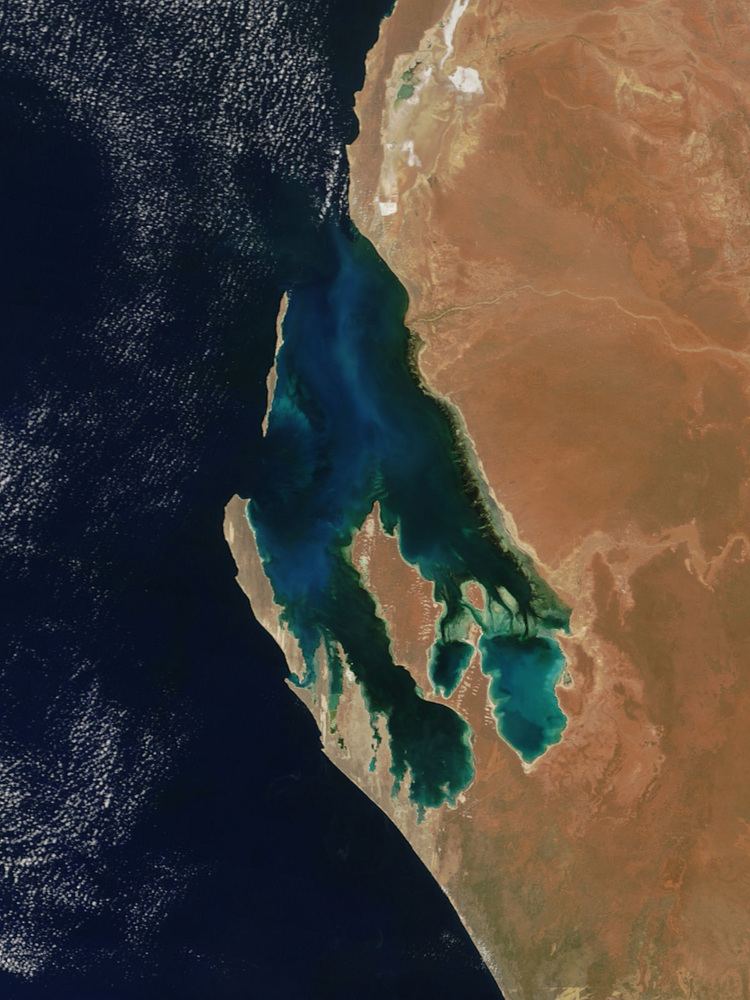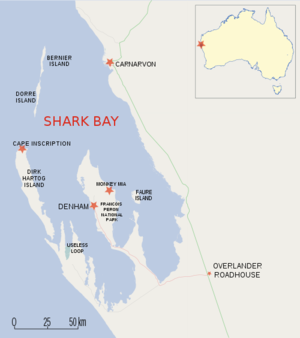Project Eden - Rebuilding Australia's Native Fauna
Interview with
Chris - You may not have heard of a Bilby, but believe me, these mini marsupials are extremely cute. But they're also an endangered species in Australia alongside many of the country's other native fauna, largely owing to feral animals, like cats and foxes, that have been introduced from Europe. But now, a major initiative called project Eden which is based in the Francois Peron National Park in Shark Bay, Northwest Australia, has been set up to tackle the problem by returning a patch of the country to what it would've been like before rat and cat bearing European settlers arrived on the scene.
 Brett - I'm Brett Fitzgerald. I'm the District Manager for the Department of Environment and Conservation in Shark Bay District. The aims for project Eden is to reconstruct the original native fauna on the Peron Peninsula within Shark Bay. So that's done through a combination of getting some information on what species were here originally, then managing the actual pressures that are on those species, the ones that were remaining and the artificial pressures that possibly pushed some of the others to extinction.
Brett - I'm Brett Fitzgerald. I'm the District Manager for the Department of Environment and Conservation in Shark Bay District. The aims for project Eden is to reconstruct the original native fauna on the Peron Peninsula within Shark Bay. So that's done through a combination of getting some information on what species were here originally, then managing the actual pressures that are on those species, the ones that were remaining and the artificial pressures that possibly pushed some of the others to extinction.
Chris - And what were they?
Brett - The main pressure that we've seen on, not only the Peron Peninsula but across Australia, is the introduction of feral predators. The feral cat which has been around for longer than foxes, but in synchronisation with that are species such as rabbits which have provided a prey source and a food source for the introduced predators. This lets them build up to numbers, and then what appears to have happened is we have a crash of those introduced prey species, such as the rabbits, and then the predators are at such large numbers that they move across to what are possibly remnants of smaller populations of native animals and push them towards extinction.
Chris - So why have you chosen this site to try this experiment, to try to make this happen?
Brett - Across a lot of Australia where we've seen native animals survive, native species survive, has been on an island environment because we haven't had the feral predators introduced. The difficulty with working on islands is simply access. They're remote and logistically they're difficult places to work on. Peron Peninsula inherently was a mainland island. It's 100, 000 hectares, so it's 1,000 square kilometres, but there's only a narrow neck, about 3.2 kilometres wide which connects that large peninsula to the mainland. So by fencing that off, controlling feral animals inside the enclosed area, we can limit the potential for re-invasion and I guess, get the best value for money for the eradication programs.
Chris - What have you done in terms of getting rid of those nuisance animals that us Europeans brought here a couple of hundred years ago?
Brett - We've controlled the large herbivores. So, species such as feral goats and sheep, and Peron before it was purchased for conservation was an operating sheep station and goats were not really used commercially in those early days, but they were present here as well. So that's a combination of mustering, trapping and eradicating those species. They're large. They tend to come to water in summer, so they're relatively easy to control. Then we had red foxes which are the common space in Europe, but introduced to Australia. They tend to be relatively easy to control by a naturally occurring poison placed in a bait here. So, the estimates were between 2 and 3,000 foxes on the Peron Peninsula before control commenced. We have the occasional one that might sneak through the fence or sneak around the fence, but we're in the order of single figures of foxes in the peninsula. The fourth major species that would be in looking and controlling is the cats. Unfortunately, control of feral cats is an incredible challenge. They've got a great breeding capacity. They don't need to drink water. They are quite adaptable with the pride they select. So they're a difficult nut to crack in a sense as far as eradication goes and they've proved a big challenge - as have rabbits. The rabbit population here tends to fluctuate with season. We have periodic outbreaks of natural diseases such as myxomatosis which depletes the population, but rabbits have an incredible breeding capacity, and even when the numbers are suppressed, once we get some reasonable rainfall, they bounce back, and they're also an issue.
 Chris - Brett Fitzgerald.
Chris - Brett Fitzgerald.
---
Chris - And apart from just eradicating the feral animals to let the plants and native species recover, project Eden also has a captive breeding program to help kick start the process. Colleen Sims...
Colleen - Let me show you here one of the animals that we've been breeding. This is a Bilby or more correctly, it's called a Greater Bilby. These guys used to be very common across Australia, around about 70% of the country. They are a marsupial and a burrowing marsupial, so one of the unusual things about many of the burrowing marsupials is they have a pouch that points backwards, so they don't fill them up with sand when they dig.
Chris - That could be a disadvantage, couldn't it? It's about the size of a rabbit, isn't it?
Colleen - That's right.
Chris - It's like a small rabbit.
Colleen - Yup and as you can see, the very long ears, one of the common names was Rabbit-eared Bandicoot. The Bilby is one of the bandicoot family. They're actually omnivores rather than a herbivore like a rabbit, so they'll eat anything from seeds, root tubers, insects. They also have been known to eat mice and small geckos and things too, so they'll pretty much go for anything that gives them a good feed. They have some fairly sharp teeth obviously, considering the array of food they eat. The other thing that's a dead giveaway for their behaviour is if you look at their forearms, they've got very strong short forearms and very long claws for digging on their front feet. They can go along on a fairly good clip. I guess it's fairly similar to a rabbit gait in fact, a sort of a half hopping gait to start with and once it gets faster, it will actually really get running. They are nocturnal so they live in burrows during the day, anything up to about two or three meters deep, so they can move a lot of sand and move it very fast. They actually were a fairly common food source for the aboriginal people and still are in some of the remote desert regions, but it takes a lot of effort to actually dig a Bilby out of its burrow.
Chris - So given they can hide underground, why are they particularly vulnerable to things like cats and foxes then?
Colleen - Well, the reality is they probably are one of the less vulnerable. The fact that they actually do still exist and persist in Central Australia at this stage means they're doing a lot better than many of the other species we previously had here. That doesn't mean they're immune and there's certainly ongoing concerns that they may still be slowly shrinking in numbers. Because they're nocturnal, because they are omnivores and move about the landscape depending on food sources, it's quite difficult to monitor them. Often, you can return to an area where there was quite a thriving Bilby colony and several years later, they aren't there anymore, and it does create problems to work out whether those animals, that population, has actually gone extinct or whether it has moved somewhere. But there's certainly ongoing concerns that even though they were persisting in the desert areas, that population and range may still be shrinking.
Chris - So when you want to breed an animal like this in captivity, what does that actually involve?
Colleen - Obviously, it initially involves getting the original animals from the wild and setting up a program. We have a fairly intensive management program here to try and manage the distribution of the genetics through the breeding population. These guys are actually comparably easy to breed. They've actually been partially adopted in Australia as a replacement for the Easter bunny. Obviously, the similarity and appearance makes them quite convenient for that, but also because they are actually quite a rapid breeder, so the fertility aspect is actually carried on. so we have an Easter Bilby these days in Australia and will usually get anything up to three or four litters out of these guys in a season in a year. So, they'll produce usually a litter of two, but anything from one to three. We will usually, based on some advice from the national stud book that gives us an idea of the relationship of various Bilbies we have in our colony, will pair a male and female. They may stay paired for most of their time here. Once we've had three or four litters, we might actually want to move pairs about and re-manage their pairings and the genetic lines from that.
 Chris - So when a baby pops out, it first of all goes into this backwards facing pouch. How long does it spend in there?
Chris - So when a baby pops out, it first of all goes into this backwards facing pouch. How long does it spend in there?
Colleen - The Bilby, as I mentioned earlier is a bandicoot. They actually have a really rapid reproductive rate. Their gestation is only about 10 days, so as with most marsupials, the foetus comes out very small and very underdeveloped, and they then spend around about anything from 65 to about 75 days in the pouch.
Chris - And are they sociable? Will they hang around with a family group or do they go off on their own and act independently as soon as they get out of the pouch?
Colleen - They'll usually spread out and disappear. In fact, some might think there's a great idea we should do with our kids, but the Bilbies, the females actually will leave the burrow, the home burrow to the kids. So she's the one who basically leaves them after around about two weeks after they've come out of the pouch.
Chris - Colleen Sims, who's a vet and project officer with Project Eden.
---
Chris - But apart from the important task of increasing the numbers of endangered species, there have also been some other surprising discoveries. Brett Fitzgerald again...
Brett - It's interesting to actually watch the re-introductions, it's so much more than just putting back the small furry animals. When you actually look inside the breeding pens of the Bilbies and when you look at areas where they're being re-introduced, these actual deeper diggings that they do, you can actually say then why that functions as part of the ecosystem. A lot of the seed that's distributed in Australia is airborne and wind driven, and you'll actually see in these deeper holes that Bilbies dig the actual seed fall into the bottom of the hole then having some dirt below over the top of them. So as far as driving the ecosystem, as far as plants germinating and getting a chance to survive, you really see the function the animals play as much as just their presence in general. Water penetration; when you look inside a Bilby pen or around a Bilby related area, you may have these shallower rabbit diggings, but the Bilbies really turn the ground over. When we have a rainfall event after that, the capacity for rainfall penetration - water to actually soak into the soil rather than runoff and disappear is that much increased by the presence of these animals. So, that's been a really interesting part of the project. It's not just to see the animals back in their natural environment, but to actually see the ecosystem function they played.
Chris - Do you think it's been successful though?
Brett - I think we've had some real successes. Some of the species such as Malleefowl, from the process of going and collecting eggs to actually hatching those eggs, to releasing those birds and then actually going in and finding active breeding mounds on the Peron Peninsula. Some of those species, Bilbies included, we've seen real success and it has essentially made Peron a site where we can potentially take those animals bred here to other locations and really use this as a launching pad. It's been challenging, and feral cat control is a challenge, but as well as the effect of control here, the other things we've learned is better techniques. So, it's a learn-as-you-go process with some of the species and some of the feral control. The techniques that we've developed here and the things we've learned about cat behaviour have been able to be applied, not just in Australia but in other parts around the world. So, I think we've had some real success with the species re-introduced here and we've learned things that have been able to be applied in other places.
Chris - Brett Fitzgerald from project Eden in Shark Bay Western Australia.










Comments
Add a comment